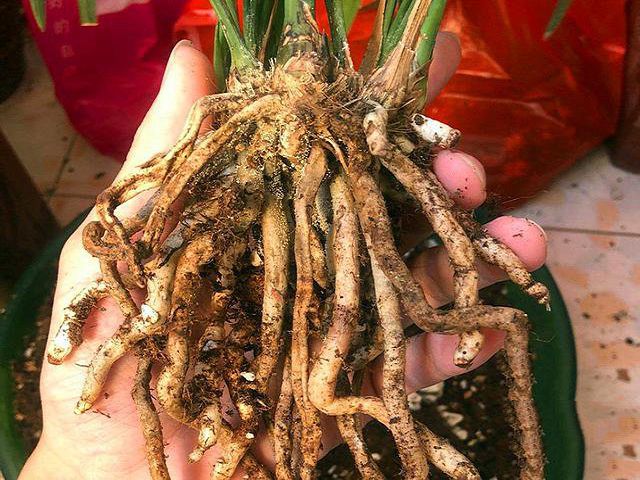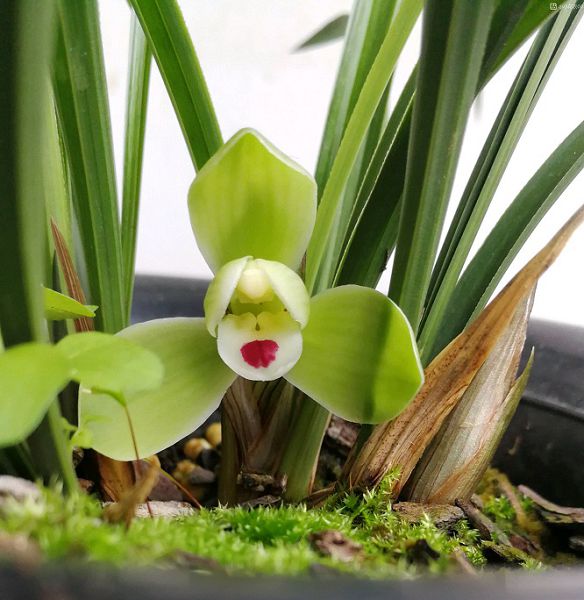Why do orchids bought online cut off empty roots and dry roots?

Not only the empty root, but also the dry root and the root with signs of decay need to be cut off. These useless roots will lay hidden dangers for the maintenance of orchids in the future. Serious conditions can lead to the death of orchids.
Why do orchids bought online cut off empty roots, as well as dry roots and roots with signs of decay?
First, the empty root of orchids is a relatively common phenomenon, mostly due to improper maintenance, and some of them die of natural aging. The empty root of orchid generally retains the epidermis and root core, which have lost their basic absorption function, and it doesn't make much sense to retain them in the basic part of the plant. The only little effect is that it can play the role of fixing the plant when planting orchids, but this little fixing effect is far less harmful to the planting substrate and orchid plants, which is the second point to be said below.
Second, empty roots and dry roots, roots with signs of decay, not only can not play any role in absorbing water and nutrients in the substrate, but will continue to rot in the substrate. These roots rot in the process of producing a large number of bacteria and microorganisms, these bacteria and microorganisms may also erode orchid healthy roots, Reed heads, leaves and other parts. As these roots continue to rot, they may continue to spread, even spread to the entire orchid plant, and eventually lead to the death of the entire orchid plant.
The previous paragraph explains why orchids bought online need to cut off empty roots and dry roots with signs of rot, so what else do we need to do with orchids bought online?
First, disinfect the plants. For orchids bought online, in addition to pruning empty roots and dry roots and roots with signs of decay, they also carry out some simple disinfection of the entire orchid plant. Kill all kinds of harmful bacteria carried by orchid plants. The method is also simple and easy, you can choose to use plant disinfection fungicides to soak the whole plant, generally choose fungicides such as carbendazim and chlorothalonil, and prepare the solution according to the specified proportion, the general concentration is 0.1%, and the soaking time is about half an hour.
Second, use rooting liquid to stimulate. Most of the plant rooting agents from regular manufacturers have obvious effects. Orchids purchased online can use some rooting agents to soak their roots to stimulate orchid cell tissue so that they can take root as soon as possible after planting. The soaking time of the root of the orchid should not be too long, usually not more than half an hour, which needs to be operated strictly according to the instructions of the rooting agent, the soaking time is too short, the soaking time is too long, and the cell tissue of the orchid may be destroyed.
Third, after the online shopping of orchids trimming, disinfecting and soaking rooting agents are completed, the plants are dried for a short time. The aim is to dry the wound at the root to avoid bacterial infection. The treated orchid plants can be placed in a cool and ventilated place to dry the roots for about a day, and the wounds caused by root pruning can basically be air-dried, and then the orchids can be planted.
Problems needing attention during and after orchid planting in online shopping
First, the choice of planting substrate. The planting substrate of orchid is very important, the orchid belongs to fleshy root system, which requires higher drainage and air permeability of the substrate and higher water retention of the matrix, so the planting substrate of orchid must reach the balance of water retention, drainage, air permeability and nutrition. The substrate for growing orchids needs to be mixed with a variety of substrates in order to achieve better results. For example, rotten leaf soil, pine bark and river sand can be prepared at 4:4:2 (for reference only), and flower friends can choose and adjust them according to the actual situation.
Second, watering after planting. After the orchid planting is completed, the fixed root water must be watered thoroughly several times to make the substrate fit closely with the orchid root system as closely as possible, the orchid root system closely with the substrate, the absorption area increased, and the orchid basin speed as much as possible.
Third, the environmental requirements of orchid conservation. Orchids like the growing environment with bright scattered light and high air humidity. In winter and early spring, orchids can accept direct sunlight, which should be avoided at other times. When families raise orchids, they need to create a relatively humid growth environment, and they can often spray water to increase air humidity to their plants and surroundings, especially in rooms with heating in summer and winter. Water spraying is an indispensable operation.
Fourth, the water and fertilizer management of orchids. Orchids like to be moist but afraid of stagnant water, so planting base selection plays a key role. The matrix with good drainage will not produce stagnant water after watering. Orchid daily maintenance, should ensure that the matrix is moist but not accumulated, see dry and wet, the four seasons can keep the matrix dry and timely water, each watering can be repeated several times to ensure that the matrix is thoroughly watered. Orchids do not like big fertilizer, so it is best to apply organic fertilizer solution to orchid fertilization. the mixed fertilizer solution of many kinds of organic fertilizer can be applied once a month, such as fermented chicken manure, sheep manure, cake fertilizer, bone meal and so on, mixed into low concentration fertilizer for irrigation. the concentration frequency needs to be lower. Stop fertilizing in winter and summer.
Conclusion: online shopping orchids need to cut off empty roots, the main reason is that these empty roots are meaningless, and will continue to rot in the substrate, causing adverse effects on orchid matrix and orchid plants. After root trimming, the orchid should be simply disinfected before colonization and maintenance.
Related
- Is the orchid suitable for indoor use? Is it good for the body?
- How to prevent the empty root of orchids?
- What to do after the crab claw orchid is withered?
- Why are the leaves of orchids always yellow? Fertilizing and watering.
- Can the root of the gentleman orchid be saved if it is rotten?
- Diagnosis and treatment of cotton-blowing beetle insects in Cymbidium
- There is a way for a gentleman's orchid to rot.
- What is the most suitable temperature and humidity for the orchid?
- How to raise a gentleman's orchid? Cultivation techniques of Cymbidium
- How to prepare the nutritive soil for the cultivation of Cymbidium



